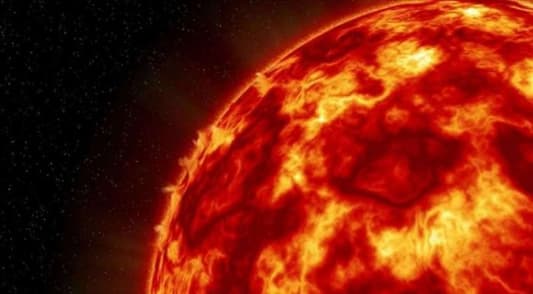
Powerful solar flare activity is forecast for Monday, which may interfere with short-wave communications, Russian scientists said after three flares were observed on the Sun on Sunday. The Fedorov Institute of Applied Geophysics in Moscow said class X flares- the enormous solar system explosions capable of creating long-lasting radiation storms- were possible, including proton flares, which can damage satellites and electronics. The National Oceanic and Atmospheric Administration’s Space Weather Prediction Center warned of a potentially geomagnetic solid storm Thursday, predicting it could reach a level of G3, the third strongest on a scale used by space weather forecasters. Such storms, triggered by coronal mass ejections (CMEs), can slam into Earth’s magnetic field and wreak havoc.
CMEs, or coronal holes, are large explosions of plasma released from the Sun’s atmosphere, the corona, and can contain material that slams into Earth’s magnetic field. According to NASA, they can cause the release of charged particles, known as solar wind, which can disrupt radio signals and power grids.
Solar flares can also be the source of cosmic radiation called radio waves, which can interfere with satellites in orbit around the Earth and even affect our communications infrastructure. A major solar flare in 1972 knocked out long-distance phone communication across the US, while a flare associated with a CME in 1989 caused a geomagnetic storm that shut off power to six million people in Canada for nine hours, according to a NASA account.
A solar flare can heat the material to millions of degrees, causing it to radiate electromagnetic energy across the entire spectrum of electromagnetic wavelengths, from radio waves to gamma rays. This radiation can interfere with our technological systems, but it is primarily confined to satellites in orbit and our communications equipment here on Earth.
Professor David Jenkins, a physicist at the University of Newcastle in Australia, is one of many experts monitoring solar flares because of their potential impact on our technology and communications systems. He says he is not worried about flares causing blackouts on the Earth, but they can impact satellites and disrupt our electronic communications systems. He cites the Carrington event of 1859, in which the solar storm spewed so much energy into the atmosphere that telegraph wires were glowing.
Prof Jenkins says solar flares can also impact the radioactive decay rates of some environmental elements. He says he is unsure why this occurs but suspects that neutrinos, or other unknown particles, are involved. “If we didn’t have such a sophisticated infrastructure of satellites and power grids, this might be quite disastrous,” he says. But, he adds, a day and a half warning of an impending solar storm would be beneficial in mitigating the effects. That is why he urges anyone who depends on electronic systems to monitor the latest developments and take the necessary precautions. He urged governments and corporations to note the warnings and develop contingency plans.


